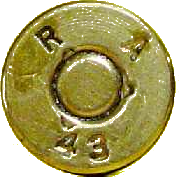Ysterhout Dot Net
This applies equally to new target shooting reloaders, as well as any that may have hit the wall after some time, and are about to throw in the towel with the whole precision reloading story.
An unconsidered aspect of precision load development has nothing to do with the load, it is the the platform. Before you begin to interpret the results, the platform must be accurate. Every part of the rifle must function reliably and repeatedly. A loose rail, misaligned scope, faulty tracking, loose action screws, a bad bedding job, a carbonised chamber neck - these are just a few causes of downrange inaccuracy. Check everything. Then check everything again. This is a vital part of achieving precision reloads, do not assume anything when examining the platform components.
Seperate learning to shoot and reloading, at least right in the beginning.
When learning to shoot, buy 200 rounds of factory target ammunition, even if you intend to reload. Try ammunition made from Lapua or Norma brass.
A common opinion is that it's cheaper to reload 200 rounds than to buy 200 rounds. Opinions need context. In the context of a new target shooter starting out reloading, it is far cheaper to buy 200 rounds of good target ammo from a major manufacturer, than it is to assemble 200 reloads of the same quality. The cost of the equipment alone is going to far exceed those 200 rounds, and you haven't even started reloading yet. To be able to produce ammunition that is more accurate than what you can buy involves a lot of time, components, reloading, testing and shooting. To start with, just buy those factory rounds that have either Norma or Lapua brass, you will reload the brass later. You will not save money by starting to reload immediately, you will just take longer to get good results on target.
You can start with Lapua or Norma brass. Those two are the finest brass in the world, and form the basis of very consistent reloads. Then shoot, and at the end of one hundred rounds, you may have achieved basic capability - know how to use the scope, understand how point of aim and point of impact change with distance, or hit pretty much where you're aiming to a few hundred yards. You now have 100 once fired, excellent quality, fireformed brass. You can now use those to reload. The other 100 you will use in between your reloads, to compare the quality and performance of what you make versus what you bought. That is the objective of precision rifle reloading after all, to make ammunition of better quality than you can buy.
Buying factory ammo to begin with, eliminates the ammunition as a variable in learning to shoot. You can concentrate on shooting. After the first 100 rounds, you have brass to begin reloading, and another 100 loaded factory rounds to use as comparison to your reloads. If you go on to produce a batch of reloads that shoot all over the place, you can confirm it's not a platform problem by shooting some factory ammo that gave you good results previously, and compare.
If you experience accuracy problems with the factory ammo, you at least know the ammo is not the problem, so you can focus on fixing the platform.
At the end of 200 rounds, any and all platform issues have to have been sorted out. This is critical for proceeding to reload precision rifle ammo.



